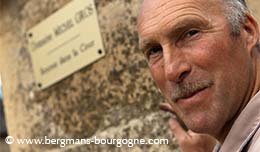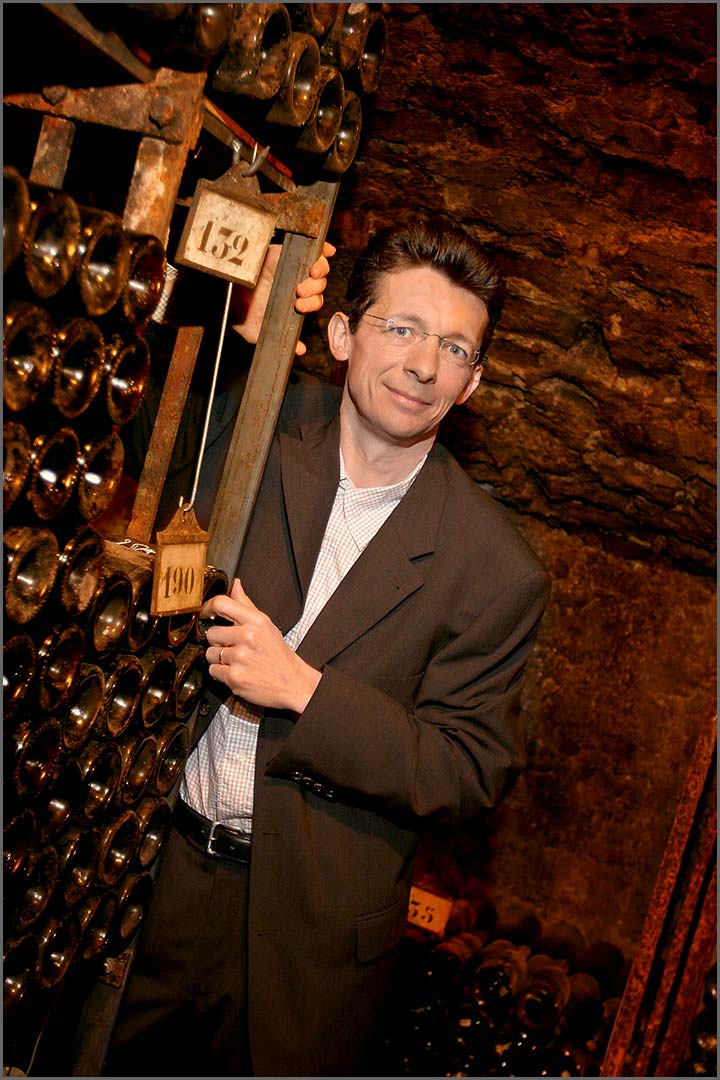
e are drinking wines we didn't make, and we are producing wines that we are not going to drink.
Stéphane Follin-Arbelet, general manager at Bouchard Père & Fils in Beaune, is putting things in perspective. Even if much wine is consumed fairly quickly after bottling many fine bottles are kept for years, often for decades, sometimes even for a century or more. Bouchard Père & Fils dates back to 1731, when Michel Bouchard set up his business in Volnay, and is today the largest landholder in the Côte d'Or.
– We have a library of 2000 bottles of pre-phylloxera wines, explains Stéphane Follin-Arbelet. The 1865 Beaune Grèves Vigne de l'Enfant Jésus is unbelievable. It is as good as a Clos Vougeot. Also the 1846 Meursault Charmes is unbelievable.
Bouchard Père & Fils owns 130 hectares of vines. On top of that are a large amount of grapes, and some must, bought in from other growers. In total this equals a production from 200 to 250 hectares, depending on the year.
– With our new winery we are able to do a good job up to 300 hectares, says Stéphane Follin-Arbelet. We buy a lot of grapes from Gevrey-Chambertin, Nuits-Saint-Georges and Pommard. Some in Puligny-Montrachet.
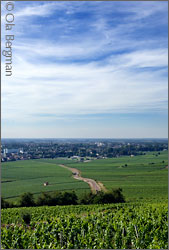
Stéphane Follin-Arbelet has been with Bouchard Père & Fils ever since the Bouchard family sold the company to Henriot in Champagne in 1995. Three years ago he was appointed general manager.
– There has been a big change here, he says. It's an unbelievable job we have done in 14 years. Ten years ago Bouchard Père & Fils was still making wines from many different places such as the Côte du Rhône and the south of France. Since then we have stopped doing non-Burgundy wines.
– When Mr Henriot bought the company he wanted to change the image of the company. Today the company has a very good image; our job is to make the best wines we can from the terroir we have.
Stéphane Follin-Arbelet believes that the old company more had the image of being a big négociant and not so much a winegrower with a portfolio of many excellent vineyards. He feels that in order to be successful you need a combination of first class vineyards and know-how. Just the vineyards will not be enough.
In their strive to improve quality Bouchard Père & Fils built a new winery in 2005, along the road to Savigny-lès-Beaune. For the past three harvests they have changed things in order to reduce the time grapes spend being transported to the winery. Instead of tractors they now rent mini-vans that transport 900 kilograms/1984 pounds to the winery every half-hour.
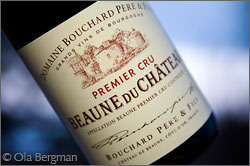
– We now use smaller buckets for the grapes, they hold only 13 kilograms of grapes, explains Stéphane Follin-Arbelet. The grapes go from the vines to the vats or the press in less than two hours.
With the acquisition of Domaine William Fèvre in Chablis in 1998 Bouchard Pére & Fils put themselves in a position where they were able to offer wines from all the major sub-regions of Burgundy. The Chablis vineyards now cover 48 hectares, of which 15 are grand cru land and 12 premier cru land.
– We have almost all the grands crus in Chablis. More than four hectares of Les Clos. We have Les Preuses, Valmur, Vaudésir, Bougros and Bougros Côte Bouguerots. Some years we are able to buy some Grenouilles. The only one we don't have that often is Blanchot.
– When you have the chance to vinify most of the grands crus of Chablis or most of the premiers crus of Meursault you understand the main differences in terroir.
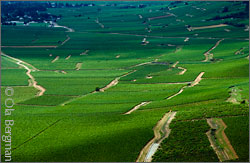
Much of the land that Bouchard Père & Fils owns is around Beaune and further down the Côte de Beaune. Only in Beaune they have around 50 hectares spread out over 23 different premiers crus. Most of these go into the two Beaune du Chateau cuvées, one red premier cru and one white premier cru. Five of the climats are bottled separately - Beaune Grèves Vigne de l'Enfant Jésus, Beaune Clos de la Mousse, Beaune Clos Saint-Landry, Beaune Teurons and Beaune Marconnets.
– In the old winery we had 74 vats for the reds, explains Stéphane Follin-Arbelet. Now we have 140 vats. But we don't vinify more wine, only better. For the Beaune du Chateau we used to vinify all the climats together in two or three vats. Now we are able to vinify the climats separately. We have 17 climats for the red Beaune du Chateau and four for the white. We are not doing all 17 separately, but more than ten.
– Back in 1907 when the Beaune du Chateau was created it would have been impossible to have 17 different Beaune premiers crus on the price list, says Stéphane Follin-Arbelet with a smile. It would have been a bit boring actually. It was a very good idea to pick the best ones and bottle them separately and then vinify the rest together.
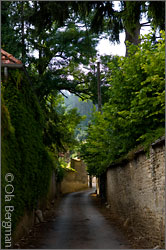
The annual production of Beaune du Chateau is around 100 000 bottles for the red and around 60 000 for the white. Stéphane Follin-Arbelet points out that even if the production is large it is all the same cuvee and it is all bottled on the same day.
– It is important for us, he says. Some of our competitors have the facilities to bottles whenever a client puts in an order, but that means you don't get the same wine in the bottles.
He describes the white Beaune du Chateau as a good alternative to premiers crus from both Meursault and Puligny-Montrachet, which tend to come with bigger price tags.
– For the white Beaune du Chateau we use the climats Les Sizies, Les Aigrots and Les Tuvilains. These are all at the southern end of the Beaune premiers crus, towards Pommard. Then we add a bit of Sur les Grèves which is just on the other side of the Route de Bouze. Sometimes, not very often, we are able to put some Teurons blanc in there as well.
Two of the premiers crus that are bottled separately are monopoles – the red Beaune Clos de la Mousse, and the white Beaune Clos Saint-Landry. Then there is the well-known Beaune Grèves Vigne de l'Enfant Jésus. Even if you'll only find this at Bouchard, this isn't a monopole.

– No one else can make a Vigne de l'Enfant Jésus. It's an exclusivity, like a brand, says Stéphane Follin-Arbelet. But it's a Beaune Grèves and there are other producers of Beaune Grèves (between 30 and 40 altogether). It's one of our flagships, one of our best cuvées. In the 19th century some villages like Volnay, Meursault, Beaune and Pommard that were Tête de Cuvée in Dr Lavalle's classification. Volnay Caillerets, Pommard Rugiens, Meursault Perrières and Beaune Grèves should all have been classified as grand crus in 1937. But for tax reasons decided not to do that. It's a pity, because these climats were considered as good as the best ones on the Côte de Nuits.
Stéphane Follin-Arbelet is very enthusiastic about the 2008 vintage at Bouchard Père & Fils.
– I had a large tasting this morning together with a client and our le maître de chais, Philippe Prost. I hadn't tasted in three weeks and now I am sure that we have a very, very good vintage.
He points out that 2008 came with both difficult weather conditions and problems with diseases in the vineyards. A lot of work was required to keep the grapes healthy.
– In the last 20 years I have never seen so big differences between vineyards. Even in good villages, with good estates, I saw bad grapes.
– Thanks to our capacity to monitor the vineyards and act at the right moment the sanitary state of the grapes was spectacular. Most of the estates had very low yields in 2008. That was not the case for us. It was lower than 2007, but only by five-ten percent.
– In 2005 everybody did well. The conditions made it easy to make good wines. For 2008 you will also have great wines, but definitely not everywhere.
© 2009 Ola Bergman










